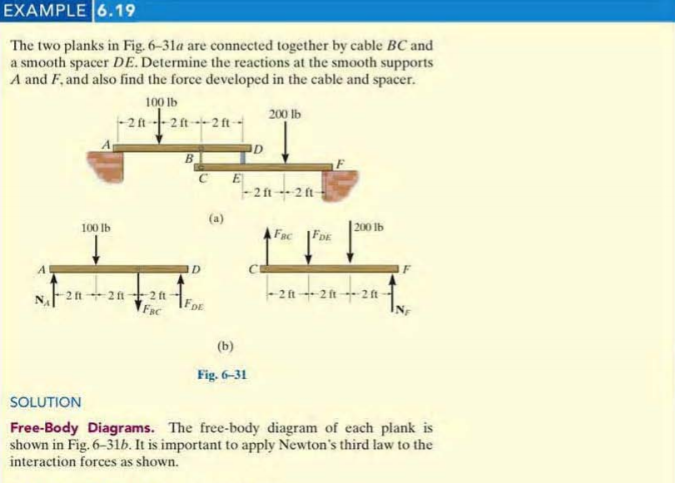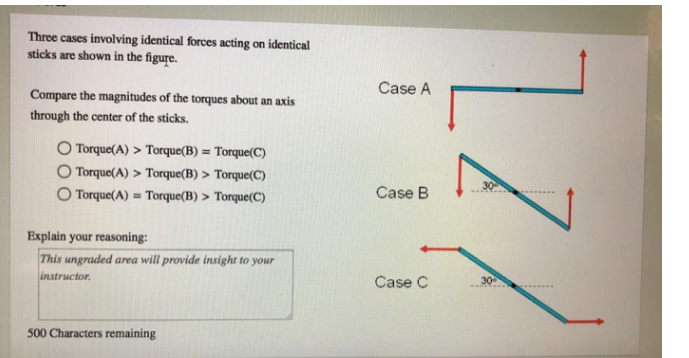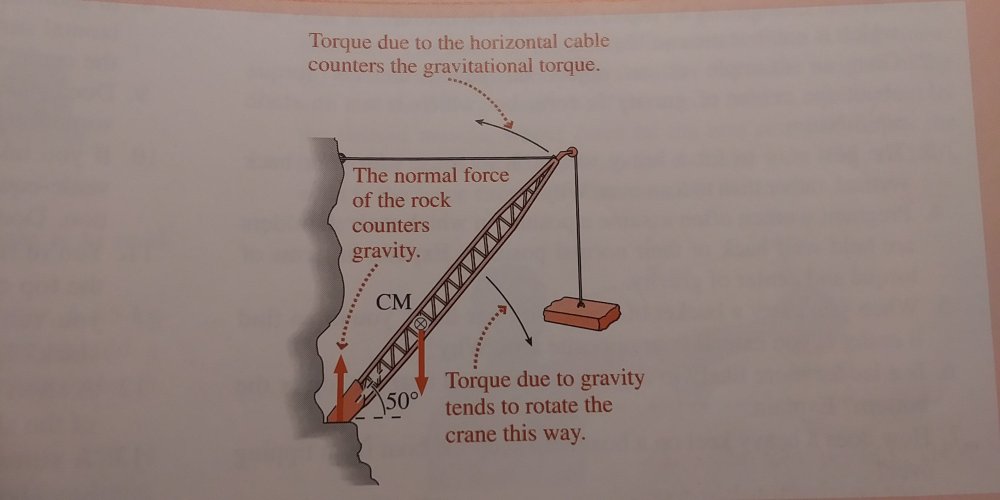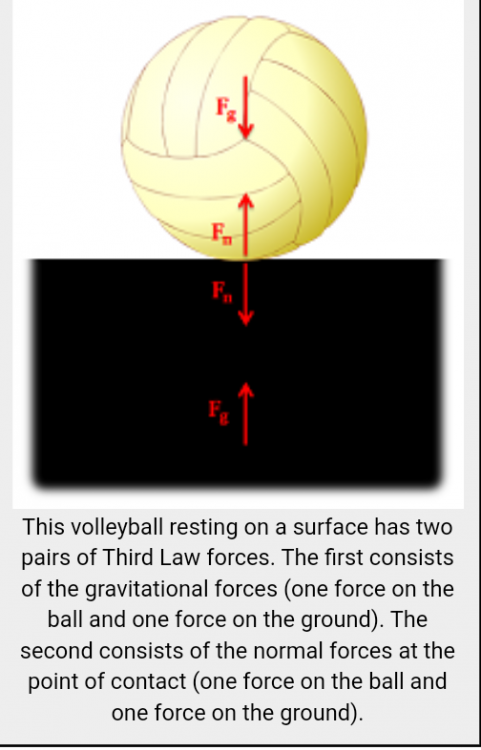

Nedcim
Senior Members-
Posts
67 -
Joined
-
Last visited
Content Type
Profiles
Forums
Events
Everything posted by Nedcim
-
I have previously appealed to this forum's moderating staff who were involved in a thread which was closed, citing that I was not arguing in good faith. Nothing could further from the truth. I'm going to prove that the moderating staff willfully ignored accepted science in favor of staff opinion. This was the moderator's claim: "If equilibrium exists, is a matter of the second law. Not the third." This claim was the basis of repeated variations used in a discussion against me. The claim fails. Newton's Third Law is fundamental to static equilibrium. Here are two examples that acknowledge that fact: Here's a video by Dr. Hanson about static equilibrium and near the one minute mark he notes the fundamental connection between equilibrium and Newton's Third Law: Here's an excerpt from '12e Engineering Mechanics' by Dr. Hibbeler which again shows Newton's Third Law is indeed fundamental to static equilibrium just as I had previously claimed:
-
It's obviously implied. There are no force arrows depicting forces exerted by the book. Yet somehow you were able to made this claim: You have contradicted your argument. Nonsense. The normal forces are third law pair they can't act on the same object. How convient? I kept repeating that argument yet somehow I missed every single reply which confirmed it. That seems suspect just like one of my replies which was butchered even though it was copied and pasted from wordpad with no error. Comparing conditions of objects that are in static equilibrium with objects that are not in equilibrium is pointless. Static equilibrium must contain a suitable third law pair. Absolutely wrong. Equilibrium depends on the conditions of all three laws of motion. However, the third law is fundamental to reactions for all static equilibrium. Sure, I just happened to miss that particular reply from you. Meanwhile your other replies to me on the exact argument gave no such claim:
-
You are entirely wrong. You have repeatedly failed to acknowledge that a normal force from the derrick must be countering the normal force from the rock. A reaction is exerted by the object. Are you denying that the derrick is exerting a normal force on the rock? More strawman from you. I said nongravitational forces result in action/reaction pair. That's exactly what I said early in this thread: You, nor anyone else acknowledged that the normal forces from the desk and book constituted a third law pair until I cited several sources which explictly made that claim. You contradicted that claim with your earlier quotes: You failed to acknowledge that the opposed normal forces are an action/reaction pair, and static equilibrium in the example, is dependent on that result.
-
You quoted me, yet my quote says nothing about a normal force countering gravity. In any case, the diagram from the physics book said: "The normal force of the rock counters gravity." Are you saying that the book is wrong? The nongravitational forces result in an action/reaction pair. Early in this thread, I mentioned about the desk pushes the book; book pushes the desk. I noted about the opposing normal forces from the desk and book. I talked about the results of gravity i.e. the normal forces etc. You, nor anyone else acknowledged that those were third law pairs. Instead the concern was about two forces acting on the same object not being consistent with Newton's third law.
-
All objects with mass exert an attractive force on one another by universal gravition. However, the force that the book exerts on Earth is negligible. I have never insisted that the normal force be paired with gravity that was done by you. What I've said is that the force of gravity on an object results in an external force. It's the external force that is countered by a nongravitational force. My inconsistency? I suppose you're going to ignore the BBC Corp., Encyclopedia Britannica, Yale University etc. They all published material that ignores the strict considerations and simply label the interaction as a third law pair. It's not the same. Encyclopedia Britannic labels the interaction between the table and book as having equal but opposite forces as a result of Newton's third law.
-
The subject is identical. The only change is that it ignores that interaction from Earth which is trvial for the vast majority of applications. Instead it focuses on the objects in contact, and simply labels that interaction as a third law pair. You won't acknowledge that a force must be countering the normal force from the rock from derrick example. More excuses. I haven't. You made the decision to resort strawman to avoid the consequences of accepting BBC article which went against your claim. What is unique is that the desk/book interaction is not an action/reaction pair because the strict consideration of the Earth interaction. However, generally that is the exception not the rule. Here is the same example but different results: More examples: Gravity obviously wasn't ignored.
-
The derrick is composed of many objects. I can't help if you choose to ignore simplest case of two books stacked together because it goes against your claim. You failed to acknowledge that some force must be countering the normal force from the rock. Those two forces satisfy the given criteria. Sure, ignore the simple case because it refutes your claim. Only in the strictest case. Refer to vollyball diagram. Same direction for identical forces? That's not true: https://www.chegg.com/homework-help/questions-and-answers/three-cases-involving-identical-forces-acting-identical-sticks-shown-figure-case-compare-m-q35472072 No, I never said that "can" has the same definition as "must." You tried to make that insinuation. Of course, Newton's 2nd and 3rd laws are different concepts. Again, another strawman argument from you. Equilibrium is dependent on all of Newton's laws of motion. You obviously didn't make much of an effort. You are holding on to a unique case, which is ignored in most applications. You have ignored or made excuses for all cases I cited and their applications. Gravity is not ignored. The book and desk example gave a normal force which is a result of gravity. The interaction of the third body is what is usually ignored. The moment of impact is critical but it does not relate enough information. Compare that with a rocket blasting off. In that case a single FBD is wholly adequate. I searched for a relevant FBD for a bat hitting a ball. Though not a true FBD, they make use of 4 diagrams to fully explain the situation: http://physicsgroup4.tripod.com/id23.htm The tilted case example, the ball has the same forces acting on it as the book, so it fails by the same convention.
-
No, an object can be composed of other objects. Stack up two books and now two objects have combined to form one object with no net force acting them. No reaction forces? It explictly notes that the normal force of the rock counters gravity. What is countering the normal from the rock? The normal force from the base of the derrick. They must form an action/reaction pair. The book and desk are in equilibrium, solely by opposed normal forces. Your mistake. You mentioned that Newton's third law does not apply. Then noted that they don't have to be equal etc. Those conditions are always true for forces that are not action/reaction pair. The normal forces are identical but oppositely directed. If they were not identical there would be a net force. Your claim. Newton's laws are fundamental to statics. You use Newton's 2nd law when acceleration is equal to 0. I never implied that "can" has the same meaning as "must". That was a strawman argument by you. I said Newton's third law can be applied to equilibrium as did the webpage Hence, equilibrium must be composed of action/reaction pair. Sure, by the definition of reporting. I will, but I doubt you'll prove your phD: You dismissed the website's claim in favor of your own on the basis they might not be qualified. The tilted case is not the same as the book and desk. The force of gravity is greater than the normal force, so there is a net force acting on the ball. Ok, that's all fine. It's still doesn't give consideration to the forces that result in the oppositely directed normal forces that was the justification to include the a third body (Earth) as with the book and desk. The ball changes direction. The ball loses all of its energy and momentum to the bat. Then the bat loses some of its energy and momentum to the ball. I don't see how you can describe that situation with a single FBD. How would it not consist of three intermediate steps where the acting forces change with time?
-
There is no consideration of the forces acting on the ball and bat only their resulting opposed normal forces. While the desk and book considers the forces that result in the opposed normal forces. That's not true at all. Again, refer back to the derrick example. It's comprised of many objects yet the derrick itself has no net force because of its suitable reactions. The deformation forces will definitely negate gravity. Take a piece of clay and press it against a wall, it not resist gravity until sufficient deformation. Then what what was you referring to with "they" if not action/reaction forces: Yes, they are the same, ultimately both examples consist of equal but oppositely directed normal forces. The force of the desk exerts on the book is being exerted on the book. Then I missed them. What are those considerations? Because the results of statics is fundamental to the issue you mentioned. Why are you ignoring the results of statics? I never implied that. Only that there must be an action/reaction or there's no application of Newton's third law. It most definitely is reporting. The BBC corporation gave a written account about Newton's third law. You said: "BBC website might be less trustworthy source than someone with a PhD in physics." Meanwhile, the BBC science staff is comprised of writers who have PhDs in physics.
-
The ball changes direction. There must be an instant when the force from the bat is equal but opposite the force of the ball, for that time there is no net force in the horizontal direction. Both the ball and bat will deform, negating the net force of gravity. External force of zero gives equilibrium. How can the forces be third law pair but not be equal magnitude or opposite in direction? That gives a contradiction. The same acting forces on two examples but with different results. There is must be more consideration other than two forces acting on the same object. Unknown or not accounted force? That's never going to be the case with an object that has a net external force or torque. A suitable reaction will give equilibrium. That is the basis of statics. If it "can be" that implies that there must an action/reaction pair for equilibrium or else Newton's third law would not apply. In any case, the BBC website has a good reputation in terms of fact based reporting: Are you suggesting that the website is somehow not being honest in its application of Newton's third law?
-
No, the example explictly said that the forces were not an action/reaction pair. The reason given here was two forces acting on the same object. That's the case with a ball hit by a bat so it should fail to be a third law pair by the same convention. Exactly, no condition of time. Hence, static equilibrium could be for an instant. Third law can be applied to forces that are not an action/reaction pair? How are you going to eliminate an external force or torque without an action/reaction pair? All of the forces act on the object. Notice how all of those forces have have a corresponding reaction? True, but as website noted Newton's third law can be applied to equilibrium. Again, how can Newton's third law be applied with no action/reaction pair?
-
Again, equilibrium doesn't matter with the bat and ball only the two forces acting on the ball. The book and desk were in equilibrium but forces on the book were not an action/reaction pair. How can Newton's third law be applied to forces that are not an action/reaction pair? There is no condition of time for equilibrium. That dilemma is going to be present with innumerable examples where the force of gravity and another force act on an object. Sure, they will. Refer back to the static equilibrium -derrick example. Explain why that example is wrong? There is no equilibrium because both Earth and the moon have rotations that are not constant and change with time because there is a net external force acting on both.
-
It is irrelevant to consider the magnitudes of forces acting on different objects. True, because they involve two different examples. I didn't intend for the examples to be directly related. In any case, you completely ignored the cited material from the website which disagreed with your claim about equilibrium having no connection with action reaction pair. Why? I never insisted on equilibrium for the bat and ball. In any case, they are in equilibrium for an instant but that is unimportant. What matters is that is that there are two forces acting on the ball when it collides with the bat. You noted the third law correctly applies. Yet the two forces acting on the book was the reason that the example was is not a third law pair. Again, not in equilibrium means there is a net external force or torque on an object. A suitable reaction(s) will counter the net external force for equilibrium.
-
Fair enough. It's used to show the justification for how the forces are assumed between objects for equilibrium contrasted with different types of forces but it's from a PDF file. Here's a a webpage that gives the same connection with Newton's third law and equilibruim: If someone hits a ball with a bat the ball is sent flying in the opposite direction. This is a result of Newton's third law. However, at the instant of contact there are two forces acting on the ball. The normal force from the bat and force of gravity. No different than case with the book on the table which had the normal force from the the table and the force of gravity and it failed to be an action/reaction pair.
-
Obviously not when offset is being applied to the forces between objects that are in direct contact. Equilibrium depends on the consequences of Newton's third law. You've already seen a few examples. Here Newton's third law is explictly given in the intro to statics:
-
Where''s the issue? Forces are offset between objects. Let's look back to results of the last diagram: "The normal force of the rock counters gravity." There are equal but oppositely directed normal forces between the rock and the reaction which offsets the external force of gravity.
-
True, only by the strictest application of Newton's third law. In practice, they are naturally considered to be action/reaction pair as shown by diagram with the volleyball. In fact, the point where equal but oppositely directed forces offset between objects is called a reaction in connection with action/reaction of Newton's third law.
-
The example is noted as not being an action/reaction pair but it is in equilibrium which is contradicted with: How? The are debris in deep space that will impact an net external force on the object, and hence no equilibrium. How can equilibrium be irrelevant? The objects in the example are assumed to be in equilibrium. If the are objects are not in equilibrium then must be additional forces that were not given. I'm not sure how you are defining something at rest in its own frame? If gravity acts on an object then there is a net external force on that object until equal but oppositely set of action/reaction offsets it: Yes, again you explained it in your initial comment. +1 It's only for the strictest consideration and mostly inconsequential. The second diagram simply omits the consequence of a third body Earth and labels ball and floor interaction as being a pair of third law forces.
-
Earth acts on both objects. The result is equal but oppositely directed normal forces. There is no consideration of a third body (Earth) for most application only the force of gravity. For most practical examples, this gives a better picture of the situation which considers the results of gravity: http://adaptivemap.ma.psu.edu/websites/1_mechanics_basics/newtons_third_law/thirdlaw.html I think a better example involving a direct consideration of Earth is if you drop an object, Earth accelerates towards that object but the amount of Earth's acceleration is trivial. In that case there are no resultant forces from gravity. The opposing normal forces are the same type. How can there be equilibruim with a net external force and torque of zero without a Newton's third law pair between objects?
-
Yes, that part of it. There's must be additional considerations when using Newton's laws in those conditions: "Newton's laws take on a more complicated, non-intuitive form. But Newton's laws in the rotating frame can be made to look like the regular Newton's laws if we treat the extra pieces in the equations as inertial forces." https://wtamu.edu/~cbaird/sq/mobile/2012/12/15/why-is-the-centrifugal-force-talked-about-so-much-if-its-not-real/ Newton's laws treat objects as points with no consideration in size and shape where air resistance is ignored. Also, Newton's laws do not work for sub atomical particles or objects with very high speeds. There are two objects: desk and book. You mean same diagram you've criticized? In any case that diagram is only focused on the the book. It doesn't show the interaction of the book with the table. Sure, it easier to attack me for some careless mistakes I made because I'm typing with a phone rather than admit you that you misrepresented what the book said and you can't give an explanation without making a contradiction to the given rule. You were are absolutely wrong on Newton's third law and its connection with equilibrium. Again, you didn't attempt to give an explanation for your claim. I wonder why? The table and book are both stationary. Where's the objection with Newton's third law? The twins are not in contact, so it's not the same situation as the example.
-
My book gave no such consideration in its explanation of Newton's third law: "If object A exerts a force on on object B, then object B exerts a oppositely directed force of equal magnitude on A." Furthermore, the book adds: "Newton's third law is about forces between objects. It says that such forces always oexample.Truairs that it is not possible for an object A to exert a force on object B without B exerting a force back on A." Again, there is no considerations on how the forces come to be only that they interact between objects. What's your explanation in those terms why the resultant normal forces from the book and table fail to be a Newton's third law pair? Equilibrium is dependent on the consequences of Newton's third law. Equilibrium requires an net external force and torque to to be zero. Explain how that is possible without the results from Newton's third law? I agree that the diagram is lacking but it's only used to highlight the unique case that is disregarded in most applications. The result of the forces is what matter for Newton's third law. The type of forces or how they come to be is not important. It's the same idea with motion. It's is of no consequence how motion came to be. What is important is how force changes that motion. It's not how I mean uniform, but how Newton formulated those laws under the assumption of uniform motion.
-
The issue is in the consideration of the two forces acting acting on the book. The force of gravity is irrelevant. What matters is its results of the equal but opposite normal forces acting on the desk and book which is Newton's third law. That reconciliation must be used for the conditions of equilibrium. Earth is not in uniform motion, so Newton's laws do not wholly apply on Earth. However, in most cases, the effects are miniscule. That's the situation with the example. Your explanation. was entirely necessary for the situation to be complete. However, those effects are so insignificant they are omitted except in special cases.
-
There are no failure of Newton's third law, it's the way that is applied in this particularly circumstance for thoroughness, to ensure when the law is used in other applications there are no contradictions. How the forces are generated is not important in terms of Newton's third law. What matters is that there two objects, with equal but oppositely directed forces. The net result is a normal force from the desk that is equal but directly opposite the normal force from the book which is Newton's third law. No, troubles but thanks for your concern. Technically, none of Newton's laws have merit on Earth because they were formulated in the context of uniform motion.
-
All valid. However, in all practical purposes there no difference in the gravitational interaction of the book-Earth and book-table. It's simply a matter that the book is not contact with Earth, so by convention Newton's third law fails.
-
I read all the explanations on this topic, but I still see the example as a contradiction to Newton's third law. Here's my reasoning: Book pushes on desk with force Fab; Desk pushes on book with a Fba. Equal but oppositely diected forces, with the forces acting on different objects consistent with Newton's third law. The same approach is applied in statics with the book being replaced by a truss. The forces applied through truss are transmitted to the reactions(desk). The force reactions are opposite but equal to that of the corresponding member. Here's a similar situation to the example I gave but in this case, the website claims the interaction is a consequence of Newton's third law: "Figure 1. The force arrow for either direction begins at the surface(the black dot). Due to Newton's third law, the normal forces will be equal in magnitude and in opposite direction. The normal force always makes a 90 degree angle with the surface (perpendicular)."https://energyeducation.ca/encyclopedia/Normal_force



.thumb.png.3509912ce0f22b5f240458618d8daa04.png)

